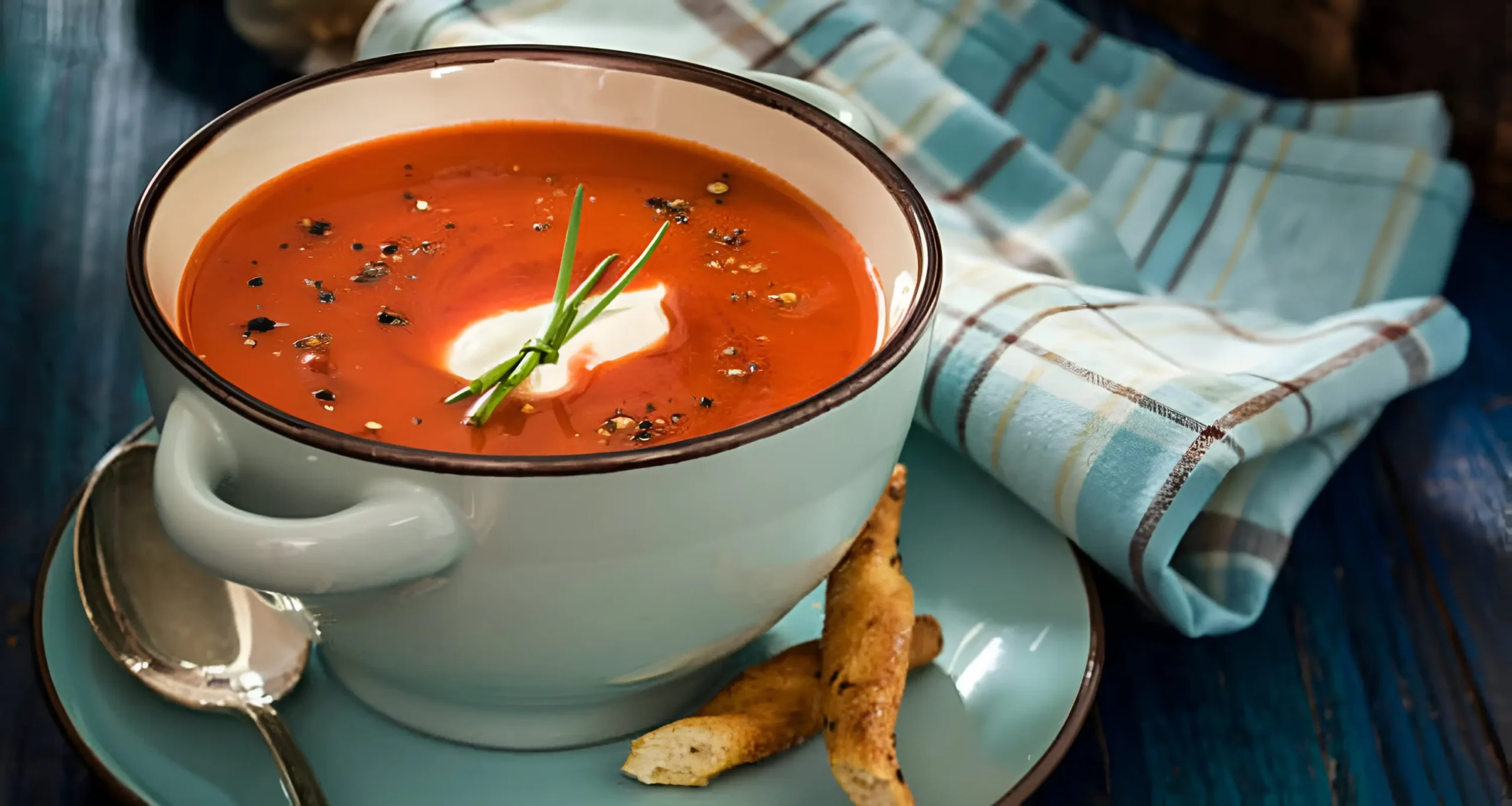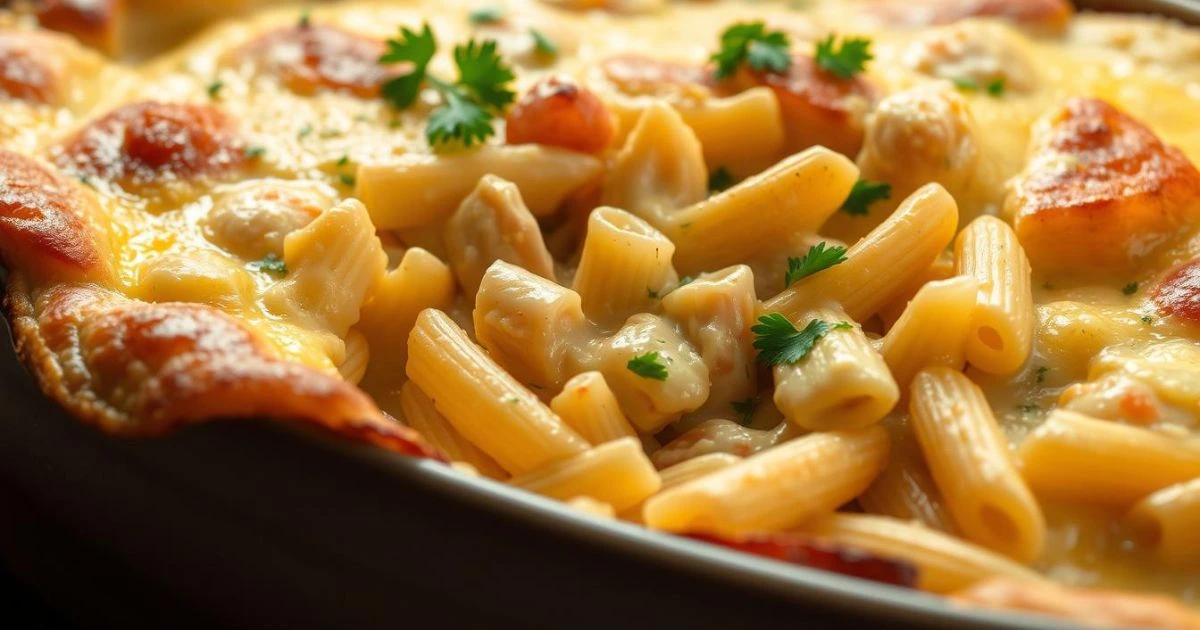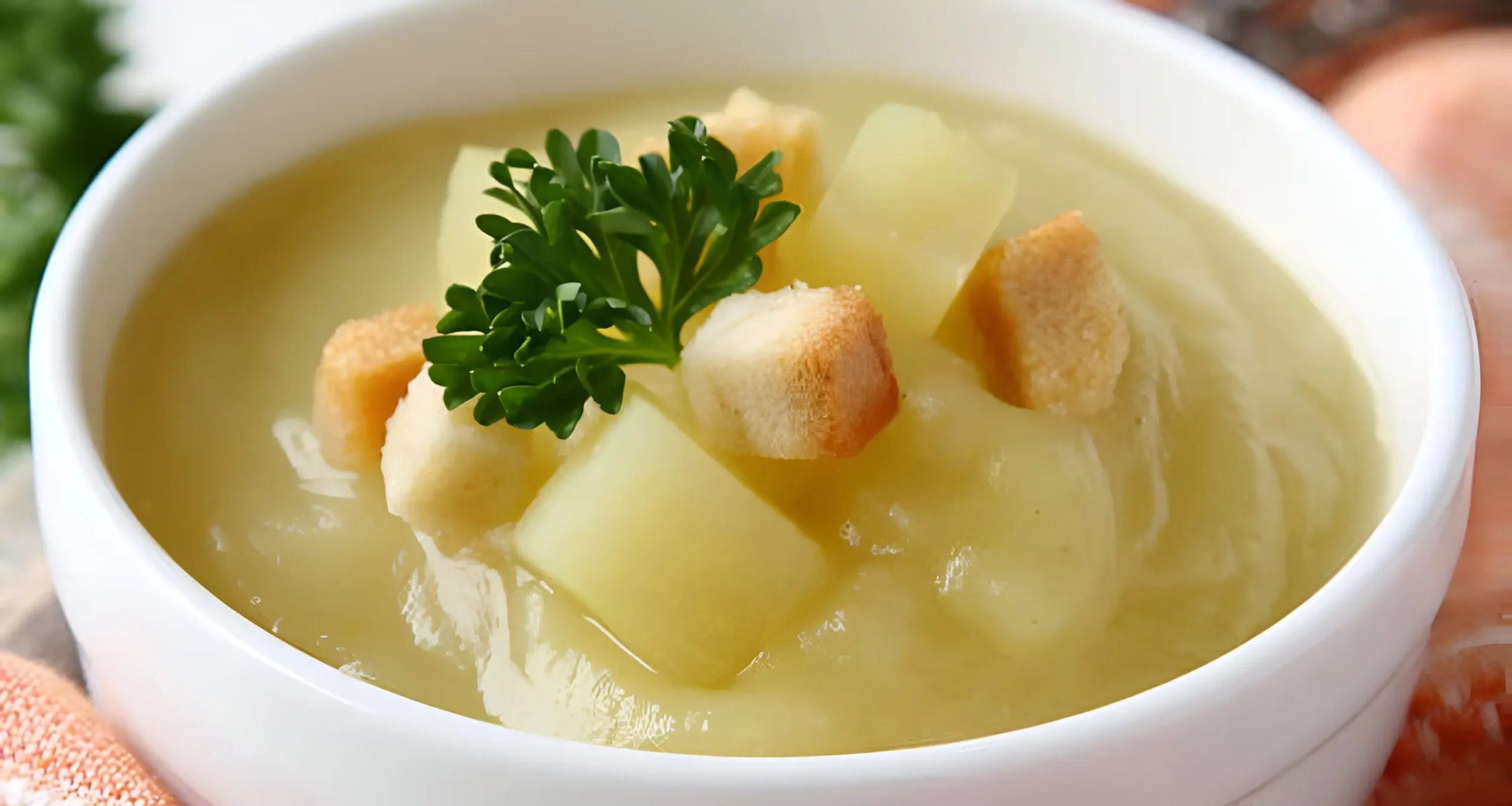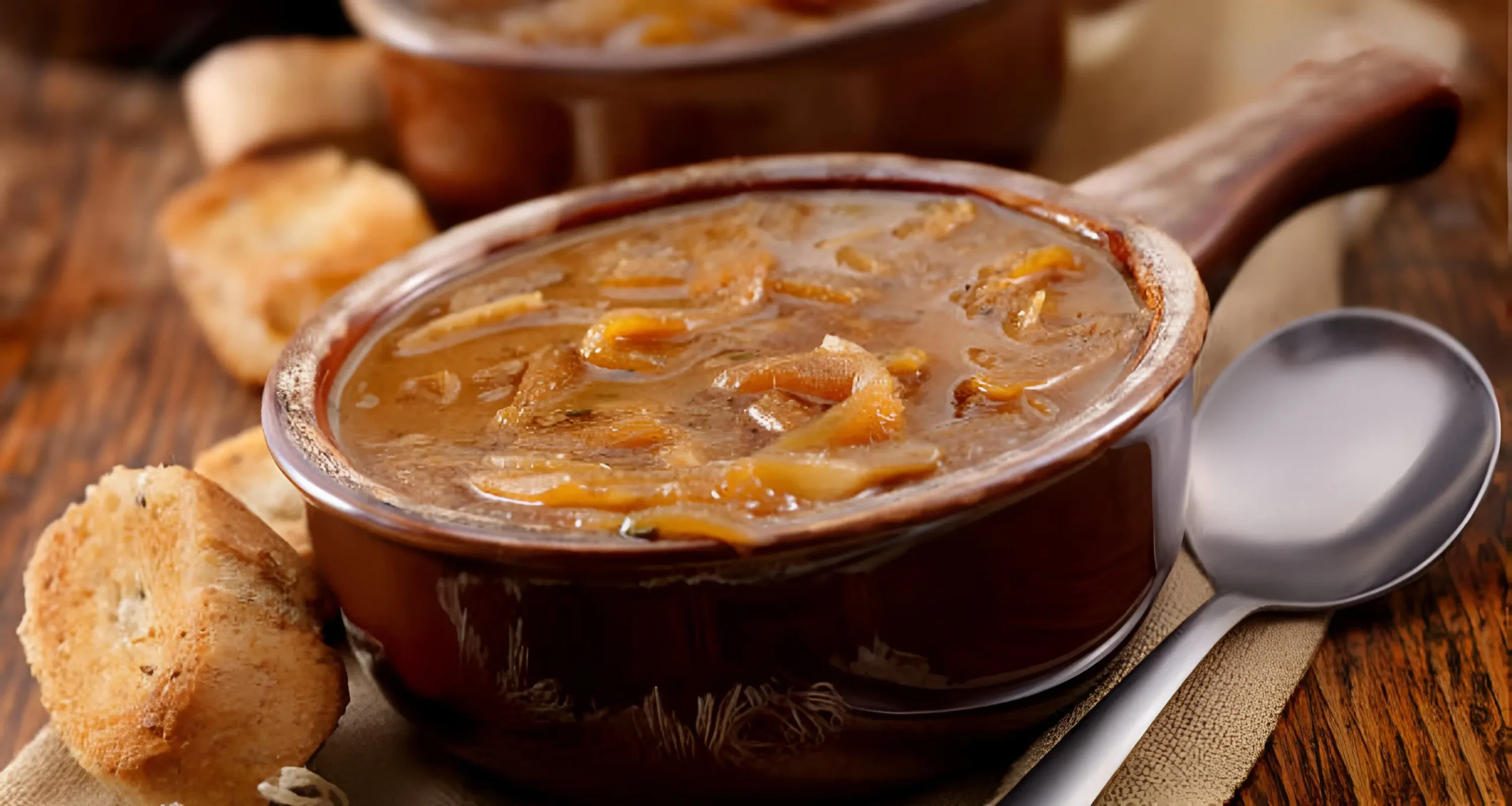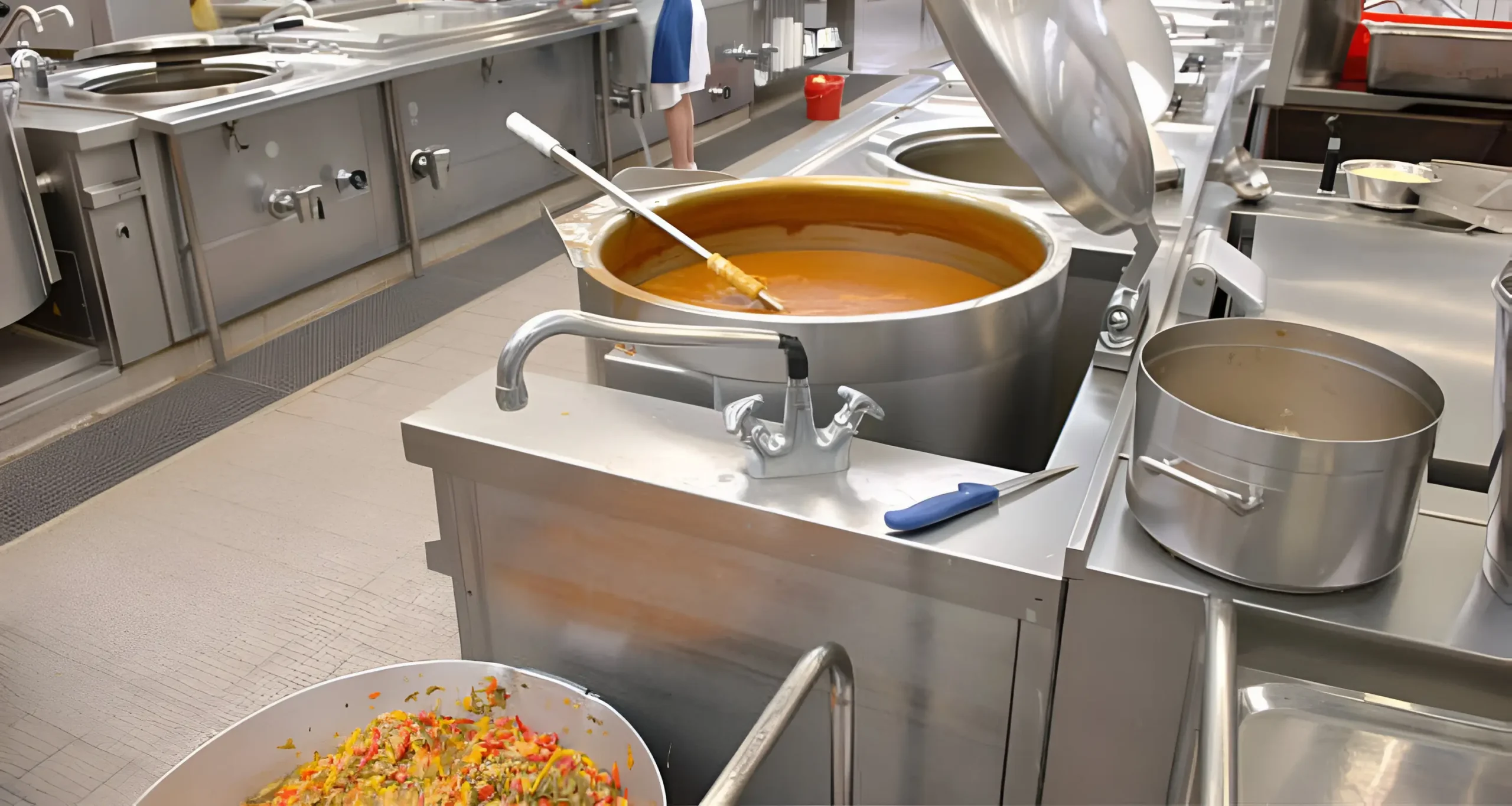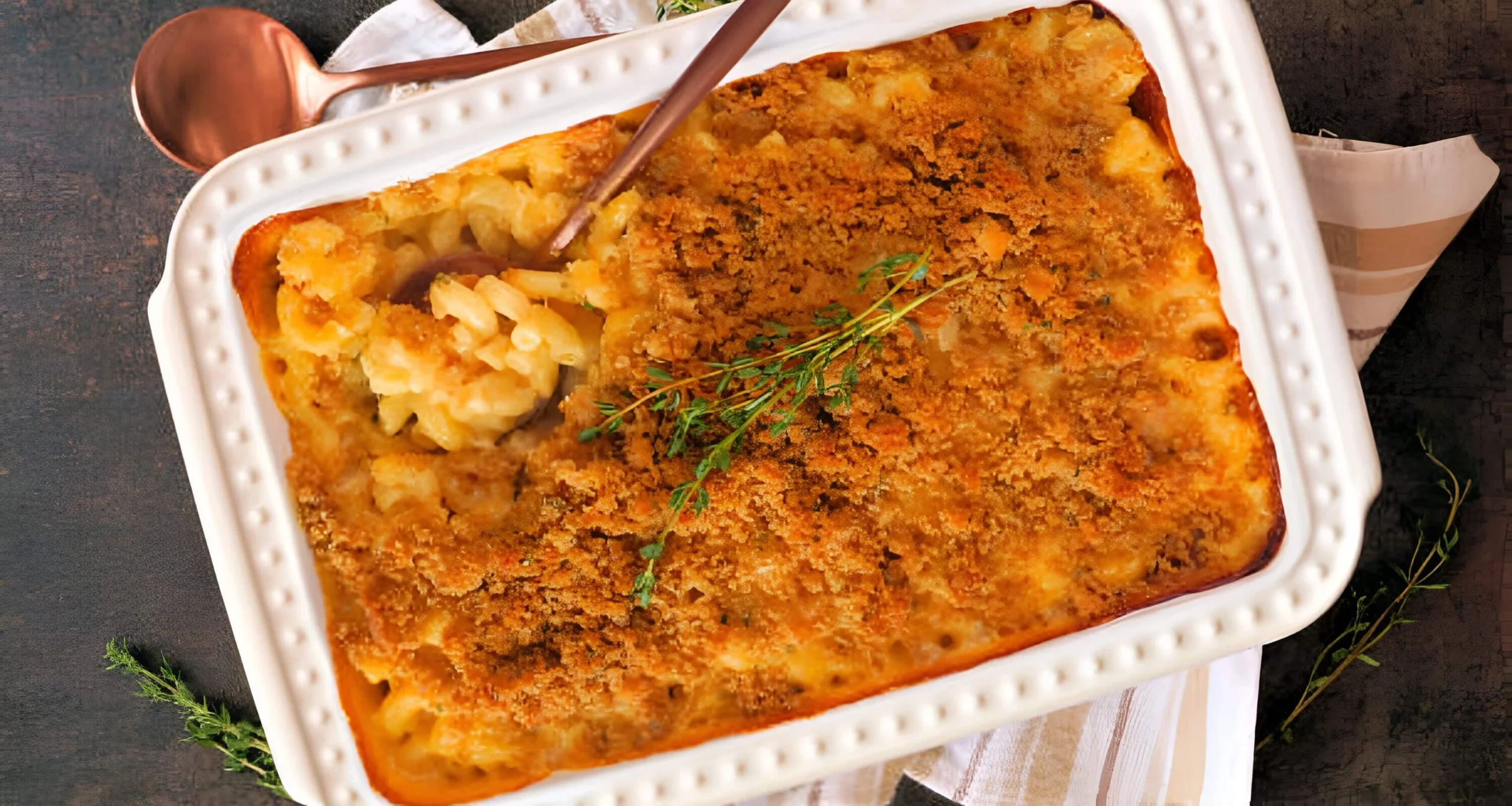Minestrone Soup Recipe: 7 Easy Steps to Make It Perfect

There are times when a warm pot on the stove feels like the best thing you can do for yourself. Maybe you’re tired from work or need a meal that goes a long way. This minestrone soup recipe is that comfort. I learned to love minestrone by following simple steps that respect Italian traditions but fit into a busy American kitchen.
In this guide, you’ll get a clear plan to make minestrone in 7 easy steps. You’ll find step-by-step instructions, ingredient guidance, and practical variations. There are vegetarian and vegan swaps, slow cooker notes, and ways to make it creamy without cream. The method balances authenticity with convenience for U.S. home cooks.
Expect about 45–60 minutes total cook time. It serves 4–6 people and is beginner-friendly. Follow the seven-step approach and you’ll know exactly when to add soffritto, beans, pasta, and greens. This way, the soup is hearty but not mushy.
Key Takeaways
- This minestrone soup recipe gives you a reliable, seven-step method to follow.
- Recipes include vegetarian and vegan options and slow cooker adaptations.
- Cook time is roughly 45–60 minutes and serves 4–6 people.
- Approach blends traditional Italian flavor with U.S. kitchen convenience.
- You’ll learn practical tips for ingredient swaps, storage, and reheating.
Why You’ll Love This Minestrone Soup Recipe
This recipe is perfect for weeknight dinners and meal prep. It’s full of vegetables, beans, and broth. This makes it filling but not heavy. You’ll love it from the first spoonful.
Healthy, hearty, and versatile
This soup is packed with fiber and vitamins from seasonal veggies and beans. Legumes add lean protein, making it satisfying. You can control sodium and fat by using low-sodium broth and olive oil.
For a green twist, try adding kale. It boosts iron and vitamin C.
Vegetarian and easily adapted to other diets
Make it vegetarian by using vegetable broth and skipping cheese. Use gluten-free pasta or farro for texture. Canned or cooked dried beans add protein.
Scale the recipe for your family or meal prep. The flavor stays the same.
Comforting Italian flavors year-round
A soffritto of onion, carrot, and celery builds rich flavor, while fresh herbs such as parsley and basil add a bright, fresh note. A splash of lemon or red wine vinegar balances the flavors.
These elements make the soup comforting in winter and refreshing in summer. Add zucchini and ripe tomatoes for a light touch.
Ingredients You’ll Need for an Authentic Italian Minestrone Soup Recipe
Start by making a shopping list to avoid any confusion. The heart of a classic soup is the soffritto and fresh veggies, along with beans and a starch for filling. Below, you’ll find the right amounts and alternatives for different diets, all while keeping the authentic Italian minestrone at the core.
Core vegetables and aromatics
Begin with 1 onion, 2 carrots, and 2 celery stalks as your soffritto base. Add 2–3 garlic cloves, 1–2 cups of chopped tomatoes (San Marzano or fresh plum), 1 medium zucchini, 1 large potato, and 1 cup of trimmed green beans. You can also use summer squash or fresh peas when they’re in season.
Beans, pasta, and grains options
Choose canned cannellini or borlotti beans for ease, or cook 1–2 cups of dried beans if you prefer. For pasta, pick ditalini, small shells, or orzo, aiming for 1 cup per 6–8 cups of broth. For a heartier texture, use ¾ cup of pearled barley or farro instead of pasta. These options help you balance the flavors in your minestrone.
Herbs, seasonings, and broth choices
Season with a handful of fresh parsley and basil, plus 1 teaspoon of dried oregano and 1 bay leaf. Season to taste with kosher salt and freshly ground black pepper. Finish with extra-virgin olive oil. For broth, choose a low-sodium option like Pacific Foods vegetable broth or Swanson chicken broth for reliable flavor and control over salt.
Substitutions for dietary preferences (gluten-free, vegan)
For a gluten-free minestrone, replace the pasta with certified gluten-free options or omit it entirely, using quinoa or rice instead. For vegan versions, choose vegetable broth and omit Parmesan, or add nutritional yeast for a savory depth. For low-sodium needs, use low-sodium broth and rinse canned beans thoroughly.
Use these general ratios as a quick guide: 1 onion + 2 carrots + 2 celery per 6–8 cups broth; 1–2 cups beans; 1 cup pasta or ¾ cup barley. Scale ingredients up or down to match pot size and the number of servings you want.
| Component | Typical Item | Quantity (per 6–8 cups broth) | Gluten-free / Vegan Swap |
|---|---|---|---|
| Soffritto | Onion, carrot, celery, garlic | 1 onion, 2 carrots, 2 stalks celery, 2–3 cloves garlic | No swap needed |
| Tomatoes & veg | San Marzano canned or fresh plum, zucchini, potato, green beans | 1–2 cups tomatoes, 1 zucchini, 1 potato, 1 cup green beans | Same; choose seasonal veggies |
| Beans | Cannellini or borlotti (canned or soaked dried) | 1–2 cups | Rinse canned beans for lower sodium |
| Pasta / Grains | Ditalini, small shells, orzo; barley or farro | 1 cup pasta or ¾ cup barley | Gluten-free pasta, quinoa, or rice |
| Broth | Pacific Foods vegetable broth or Swanson chicken broth | 6–8 cups low-sodium broth | Vegetable broth for vegan |
| Herbs & finishing | Parsley, basil, oregano, bay leaf, olive oil | Handful fresh herbs, 1 tsp dried oregano, 1 bay leaf, drizzle EVOO | Nutritional yeast instead of cheese for vegan |
Prep Steps to Make Your Easy Minestrone Soup Recipe Faster
Good prep makes cooking faster and more enjoyable. By following simple habits, you can save time without losing flavor. These tips will help you make minestrone soup recipe more efficiently every time.
First, organize your tools and tasks. You’ll need a sharp knife, cutting board, vegetable peeler, colander, large pot, and ladle. Prep time varies, but you can save 10–15 minutes with make-ahead ingredients.
How to chop vegetables efficiently
Use consistent dice sizes for even cooking. For soffritto, cut into small dice (about 1/4 inch) to release flavors quickly. Cut root veggies like potatoes and carrots into larger chunks (about 1/2 inch) to keep their texture.
Keep your knife sharp and use the tip for control when dicing. For faster preparation, grate the carrots or process them in a food processor. Clean cuts help veggies stay bright and prevent bruising.
Soaking and preparing dried beans vs. using canned
Dried beans add depth to your minestrone soup recipe but require planning. For a rapid soak, boil the beans for 2 minutes, then let them sit for 1 hour. For an overnight soak, cover beans with three times their volume of water and chill for 8–12 hours.
Use an Instant Pot for pressure cooking if you’re short on time. Cannellini or navy beans cook in about 25–30 minutes at high pressure from soaked. If using unsoaked beans, cooking will take longer; refer to the package instructions. Canned beans offer convenience, but rinse and drain them to reduce sodium.
Make-ahead tips for broth and mise en place
Homemade broth enhances your minestrone soup recipe. Freeze it in ice-cube trays or quart containers for later use. Frozen broth cubes help control flavor and salt.
Prep soffritto up to 24 hours ahead and store it in a labeled container. Pre-cook grains or beans and refrigerate them to save time. Keep each ingredient in its own container for easy assembly during cooking.
| Task | Tool | Time Saved | Notes |
|---|---|---|---|
| Dice soffritto | Chef’s knife, cutting board | 10–15 min on cook day | Small dice speeds flavor release and uniform cooking |
| Grate carrots | Box grater or food processor | 5–10 min | Faster than slicing, blends into broth texture |
| Soak beans (quick) | Stove pot | Reduces active cooking later | Boil 2 minutes, sit 1 hour for reliable rehydration |
| Pressure-cook beans | Instant Pot | 30–60 min vs slow stove | 25–30 minutes high pressure for soaked cannellini |
| Freeze broth portions | Ice-cube tray, quart containers | Prevents daily stock-making | Use make-ahead broth for minestrone to control flavor |
| Mise en place containers | Labeled airtight containers | Streamlines assembly | Keep vegetables, beans, and pasta separate until use |
Follow these prep steps to make your minestrone soup recipe faster and more enjoyable. Good organization saves you time and lets you focus on the flavors.
Seven-Step Cooking Method: How to Make Minestrone Soup Recipe Perfectly
Follow a clear seven-step cooking method minestrone soup recipe to get consistent results every time. Start with tools and mise en place so ingredients move from board to pot without stress. Gentle, gradual steps help maintain vibrant flavors and distinct textures.
Building flavor with soffritto and aromatics
Heat extra-virgin olive oil in a large Dutch oven over medium heat. Sweat a classic soffritto of onion, carrot, and celery until soft and fragrant, about 6–8 minutes. This crucial soffritto step builds the savory foundation that forms the base of the minestrone soup recipe.
Adding vegetables, beans, and liquid
Stir in garlic and tomato paste or crushed tomatoes and cook briefly to remove raw tomato edge. Add firmer vegetables like potatoes and larger carrots, plus drained beans, and toss to coat. Pour in 6–8 cups of broth with a bay leaf and herbs, bring to a simmer, and cook until vegetables are tender, about 15–20 minutes.
Cooking pasta or grains without overcooking
Add quick-cooking vegetables such as zucchini, green beans, or peas and grains like barley early enough for them to finish with the minestrone soup recipe. When you include pasta, follow a simple rule for cooking pasta in minestrone: either cook it separately and add to bowls at service, or add pasta to the pot in the final 8–10 minutes and undercook it slightly so it finishes off heat.
Finishing touches: herbs, olive oil, and acidity
Finish with chopped fresh parsley or basil, a generous drizzle of high-quality olive oil, and a splash of red-wine vinegar or lemon juice. These finishing touches minestrone sharpen the flavors and lift the whole pot. For extra umami, simmer a parmesan rind in the broth or grate Parmigiano-Reggiano when serving.
Fine-tuning and troubleshooting
If the minestrone soup recipe is too thin, remove a cup of broth and simmer until it reaches stew-like body. For a creamier texture, blend a portion of the minestrone soup recipe and return it to the pot. If pasta has gone mushy, next time cook pasta separately or shorten its time in the pot.
| Step | Action | Timing |
|---|---|---|
| 1 | Sweat soffritto (onion, carrot, celery) in olive oil | 6–8 minutes |
| 2 | Add garlic and tomato paste or tomatoes; cook briefly | 1–2 minutes |
| 3 | Add firmer vegetables and beans; toss to coat | 2–3 minutes |
| 4 | Pour in broth, add bay leaf and herbs, simmer | 15–20 minutes |
| 5 | Add quick-cooking vegetables and grains; time to finish with minestrone soup recipe | 8–15 minutes depending on ingredient |
| 6 | Manage pasta/grain timing: cook separately or undercook in pot | Last 8–10 minutes for pasta |
| 7 | Finish with fresh herbs, olive oil, and a splash of acidity | At serving |
Variations: Easy Minestrone Soup Recipe Vegetarian and Vegan Options
Adapt the classic minestrone to fit your pantry and diet. Simple swaps can turn it into a vegetarian or vegan version. Both will be rich and satisfying.
For a dairy-free base, use a robust vegetable broth. Homemade or Pacific Foods vegetable broth adds depth. Replace Parmesan with nutritional yeast or white miso for savory notes.
Boost protein for a filling bowl. Add 1–2 cups extra beans like cannellini, navy, or chickpeas. Cube 8 ounces of firm tofu and pan-sear until golden. Small cubes of tempeh add texture and a nutty flavor.
When cutting cheese, watch texture and seasoning. Taste often for salt and brightness. Finish with lemon or red wine vinegar and fresh herbs for lift.
Try extra umami tricks for vegan versions. Add kombu to the pot and remove before serving. Roast tomatoes first for sweetness. Stir in smoked paprika or tahini for body and complexity.
Here’s a quick comparison to help you choose the best protein and flavor enhancers for your version.
| Goal | Option | Portion | Notes |
|---|---|---|---|
| Classic vegetarian | Vegetable broth + Parmesan | 4 cups broth, 1/4 cup grated | Rich, familiar finish; add less salt if broth is salted |
| Easy plant-based protein | Cannellini beans or chickpeas | 1–2 cups cooked | Hearty mouthfeel; works with any pasta or grain |
| Firm texture | Tofu (pan-seared) | 8 ounces | Press first, sear for color and bite |
| Nutty chew | Tempeh cubes (pan-fried) | 6–8 ounces | Marinate briefly for extra flavor |
| Vegan umami | Kombu, miso, roasted tomatoes | 1 strip kombu or 1 tbsp miso | Remove kombu before serving; add miso off heat |
| Creamy body without dairy | Tahini or blended beans | 1 tbsp tahini or 1/2 cup blended beans | Stir in near the end for a smooth finish |
These variations let you tailor a minestrone soup recipe to fit vegetarian, vegan, and protein-forward needs. Keep tasting and adjust salt and acid to reach the bright, balanced bowl you want.
Healthy Minestrone Soup Recipe with Kale and Other Greens

Adding greens to minestrone makes it unforgettable. They bring color, texture, and nutrients. Here are tips to make your kale or leafy vegetable soup vibrant and balanced.
When to add kale to keep it vibrant and tender
Put in kale or Swiss chard for the last 5–10 minutes. This makes them tender and keeps their color. For baby kale or spinach, add them in the last 1–2 minutes so they just wilt.
Other leafy green alternatives and nutrition benefits
Escarole adds a classic Italian touch. It’s like kale and works well in simmering. Swiss chard, collard greens, and beet greens are also good choices, needing 5–10 minutes to cook.
Spinach and baby greens wilt fast and are best added at the end. Kale is packed with vitamins A, C, and K, plus folate, calcium, and fiber. Swapping in chard or escarole gives similar nutrients but with different textures. Including beans increases protein and iron, making kale minestrone even more nutritious.
Pairing greens with beans and acidic finishes
Beans like cannellini or borlotti pair well with greens. They add protein and creaminess. A splash of lemon juice or red-wine vinegar brightens the flavors and releases nutrients.
Drizzle extra-virgin olive oil for a smooth finish. Sprinkle in toasted pine nuts or pumpkin seeds to add a satisfying crunch. These touches enhance the soup’s nutrition and texture.
| Green | Best Cook Time | Texture | Key Nutrients |
|---|---|---|---|
| Kale | Last 5–10 minutes | Firm, slightly chewy when cooked | Vitamins A, C, K; calcium; fiber |
| Escarole | Last 5–10 minutes | Tender but holds shape | Vitamins A, K; folate; fiber |
| Swiss chard | Last 5–10 minutes | Soft stems, leafy body | Vitamins A, C, K; magnesium; iron |
| Spinach (baby) | Final 1–2 minutes | Delicate, wilts instantly | Folate; vitamins A, C; iron |
| Collard greens | Last 5–10 minutes (or blanch first) | Hearty, fibrous | Vitamins A, C, K; calcium; fiber |
Slow Cooker Minestrone Soup Recipe Tips for Set-and-Forget Cooking
This slow cooker minestrone soup recipe makes weeknight meals easy. Start by browning your soffritto in a skillet to build flavor. Then, transfer it to the crockpot with the rest of the ingredients.
Leave pasta and delicate greens out until the end. This keeps their texture bright and intact.
Adapting the seven-step method for slow cooking
Brown onions, celery, and carrot in olive oil before adding them to the slow cooker. This step deepens the base without needing high heat inside the pot. Add sturdy vegetables, beans, herbs, and broth next, then set the cooker to low for a gentler, longer meld of flavors.
When to add vegetables, beans, and pasta in a slow cooker
Use canned or pre-cooked beans and plan for low 6–8 hours or high 3–4 hours. Add quick-cooking vegetables like zucchini or spinach during the last 30–45 minutes. Pasta should be cooked separately and stirred in when serving if you want firm bites.
Safety and texture considerations for long cooks
Do not overfill the slow cooker. Keep the unit at safe temperatures and reheat leftovers to 165°F before serving. Choose hearty ingredients—potatoes, carrots, and barley hold up well to long simmers while softer items break down.
Extra tips for better flavor and consistency
If the minestrone soup recipe is thin after slow cooking, reduce some broth on the stovetop to concentrate flavor. For creaminess without dairy, blend a portion of the minestrone soup recipe and stir it back in. These easy steps preserve texture while enhancing flavor.
| Step | When to Do It | Why It Helps |
|---|---|---|
| Brown soffritto | Before slow cooking | Adds caramelized depth and aromatic base |
| Add beans and sturdy veg | At start of cook | Prevents mush and allows flavors to infuse |
| Add quick veg | Last 30–45 minutes | Keeps color and texture vibrant |
| Pasta | Cook separately or last 30 minutes | Stops pasta from turning mushy |
| Reduce or blend | After slow cooking, if needed | Concentrates flavor and adds creaminess |
Creamy Minestrone Soup Recipe Without Cream: Techniques and Ideas

You can make a silky, satisfying bowl without dairy. Use simple pantry items to add body and mouthfeel while keeping the minestrone soup recipe light. The approaches below give options for a creamy minestrone soup recipe without cream that work whether you cook on the stove or in a slow cooker.
Using blended beans or vegetables for creaminess
Blend 1–2 cups of cooked cannellini beans with 1/2 to 1 cup of hot broth until smooth. Stir the puree back into the pot to thicken and add silkiness. You can substitute cooked starchy vegetables like carrots or a small sweet potato for a milder flavor.
For best texture, cool the beans slightly before blending and use a high-speed blender or immersion blender. This gives the same effect as a dairy base without weighing the soup down, and keeps the ingredient list short.
Nut-based creaminess minestrone
Make cashew cream by soaking 1/2 to 3/4 cup raw cashews for 2–4 hours, then blend with 1/2–3/4 cup water until velvety. Add 1/2–1 cup of this cashew cream per 6–8 quart pot to reach a rich finish without dairy.
To avoid graininess, strain the blended mixture through a fine mesh if needed and add it near the end of cooking on low heat. This nut-based creamy minestrone option remains vegan while providing a smooth, neutral texture that complements tomatoes and herbs perfectly.
Potato-thickened minestrone
Use a medium russet potato, peeled and diced, cooked until very tender. Mash or blend the potato with a bit of broth and return it to the minestrone soup recipe. Using one medium potato per large pot gives the soup a smooth, hearty base without changing its flavor.
If you prefer a subtler effect, reserve a cup of cooking liquid and smash a portion of the potatoes, then whisk the starchy liquid into the pot. This technique yields potato-thickened minestrone with a silkier mouthfeel and stable texture when reheated.
Maintaining a light, healthy finish without dairy
Use only enough thickening to reach your desired mouthfeel. Enhance the soup’s flavor with a tablespoon of lemon juice or a dash of red wine vinegar just before serving. Fresh herbs like parsley or basil cut through richness and refresh each spoonful.
Top bowls with lighter garnishes: microgreens, a drizzle of extra-virgin olive oil, or a tablespoon of grated Pecorino if dairy is allowed. These final touches keep the creamy Minestrone Soup Recipe, made without cream, vibrant and well-balanced.
Tips for Serving, Storing, and Reheating Your Minestrone Soup Recipe
You want your minestrone to look and taste its best from first bowl to last. Use simple finishing touches, smart storage, and gentle reheating so each serving stays lively and fresh.
Best garnishes and bread pairings
Top with grated Parmigiano-Reggiano or a vegan substitute for added umami, then sprinkle with chopped parsley or basil and finish with a light drizzle of extra-virgin olive oil. Cracked black pepper gives a final lift.
Choose breads that soak without falling apart. Toasted rustic bread, focaccia, or garlic crostini make great partners for dipping and contrast the soup’s texture.
If you enjoy wine pairings, try a light-bodied Chianti or a crisp Pinot Grigio to match the minestrone soup recipe’s acidity and herbs.
How to store in the fridge and freeze
Allow the minestrone soup recipe to cool to room temperature before storing it in airtight containers. Store in the refrigerator for 3–4 days for best quality.
For long-term keeping, cool completely and portion into freezer-safe containers leaving some headspace. Freeze up to 3 months. Avoid freezing with pasta inside when possible to prevent mushy results; barley freezes well and keeps texture.
Label containers with the date and contents so you can track freshness and rotate supplies easily.
Reheating without losing texture
Thaw overnight in the refrigerator when possible. Reheat gently on the stovetop over medium-low heat until it just reaches a simmer. Add a splash of broth or water if the minestrone soup recipe becomes too thick.
If cooked pasta softened in storage, reheat the minestrone soup recipe gently and add freshly cooked pasta at serving time to restore bite. Taste after warming and adjust salt and acidity; lemon juice or a splash of vinegar brightens flavors well.
For safety, reheat leftovers to 165°F. Use a food thermometer to confirm temperature before serving.
Common Troubleshooting for Perfect Minestrone Soup Recipe Every Time
Fixing a minestrone soup recipe that’s gone wrong is easier than you think. A few quick steps can save your dish. Here are some tips to fix common issues and avoid them next time.
How to fix watery or bland minestrone soup recipe
To fix a watery minestrone, let it simmer uncovered. This helps concentrate the flavors and reduces excess liquid. For a quicker fix, blend cooked beans or veggies and mix them back in. This adds richness and body.
For more depth, try adding a bit of miso, soy sauce, or Parmesan rind. These ingredients enhance flavor without adding fat.
Solutions for overcooked pasta or soggy vegetables
If your pasta is mushy, stop cooking it right away. Cook fresh pasta separately and serve it with the minestrone soup recipe. This keeps the pasta al dente.
To revive soggy veggies, add fresh, blanched ones to the pot. For future batches, prepare pasta and grains separately. This prevents them from becoming mushy.
Adjusting salt, acidity, and seasoning balance
Check the flavor at different stages of cooking. Season gradually with salt, then finish with a splash of lemon juice or vinegar, starting small and adjusting to taste.
Finish with black pepper and fresh herbs like parsley or basil. These provide a final burst of flavor.
Preventive tips to avoid common mistakes
Use consistent dice sizes for even cooking. Add ingredients in order of cooking time. Begin with firm root vegetables and add leafy greens toward the end.
Avoid boiling; a gentle simmer keeps the minestrone soup recipe clear and textured. These tips help you avoid common problems.
| Problem | Quick Fix | Long-Term Solution |
|---|---|---|
| Watery, weak flavor | Simmer uncovered; blend beans or veg; add Parmesan rind or miso | Measure liquid carefully; brown soffritto for deeper base |
| Overcooked pasta | Serve soup over freshly cooked pasta; stop pot to cool | Cook pasta separately and add at serving time |
| Soggy vegetables | Stir in blanched fresh vegetables for texture | Stagger vegetable additions by density |
| Flat or unbalanced taste | Add salt in small amounts; finish with lemon or vinegar | Season in stages; taste after simmer and after additions |
| Too thin but rich | Blend part of the soup for thickness and body | Use beans or starchy vegetables to naturally thicken |
Conclusion
Follow the seven-step method and prep tips to make a delicious, healthy minestrone soup recipe. Start with a soffritto for flavor, then add veggies and pasta at the right time. Top it off with fresh herbs, a drizzle of olive oil, a squeeze of lemon, or a splash of vinegar.
This recipe is great for vegetarians and vegans. It uses seasonal veggies, beans, and grains. Try adding kale or using farro or small pasta for a twist.
For a hands-off version, use a slow cooker. Or, add creaminess without dairy. If you face issues like thin broth or overcooked pasta, use the troubleshooting tips.
Save this recipe for future reference. Experiment and share your experiences. This way, your minestrone will get better with each try.
FAQ
What makes this an authentic Italian minestrone soup recipe while being easy to follow?
This recipe follows Italian tradition by starting with a soffritto (onion, carrot, celery). It uses fresh herbs like parsley and basil. It finishes with olive oil and a splash of acid.It’s made easy with clear steps, pantry-friendly ingredients, and easy swaps. This way, you can make it in a typical U.S. kitchen.
How long does the recipe take and what yield should I expect?
It takes about 15–25 minutes to prepare and 30–40 minutes to cook. This totals around 45–60 minutes. You’ll get 6–8 servings, depending on pasta or grains.Slow cooker versions take 3–8 hours, depending on the heat setting.
Can I make this minestrone soup recipe vegetarian or vegan without losing flavor?
Yes, you can. Opt for a rich vegetable broth and skip the cheese. Add umami with nutritional yeast, miso paste, or soy sauce.Boost protein with extra beans, tofu, or tempeh. Finish with lemon or vinegar and fresh herbs for brightness.
What are good substitutions for pasta if I need a gluten-free minestrone soup recipe?
Use certified gluten-free pasta, quinoa, or rice. Or, omit pasta and add extra beans or roasted potatoes. Add gluten-free grains at serving to avoid a soggy texture.
How do I prevent pasta from getting mushy in the minestrone soup recipe?
Prepare the pasta separately and add it to the bowls just before serving. Or, undercook pasta by a minute and finish it off-heat. If cooking pasta in the minestrone soup recipe, add it in the final 8–10 minutes and monitor closely.For make-ahead and freezing, freeze the minestrone soup recipe without pasta and add freshly cooked pasta when reheating.
What’s the best way to add kale or other greens so they stay bright and tender?
Add hearty greens like kale or Swiss chard in the last 5–10 minutes of simmering. Baby kale or spinach should be stirred in the final 1–2 minutes. Finish with acid and olive oil to brighten flavors.
How can I prepare a creamy minestrone soup without using cream?
Blend cooked cannellini beans or starchy vegetables with broth and stir back into the pot. Use cashew cream or mash a cooked russet potato for creaminess. Keep the finish light with lemon or vinegar and fresh herbs.
What changes are needed to adapt the seven-step method for a slow cooker minestrone soup recipe?
Brown the soffritto in a skillet first for flavor. Then, transfer it to the slow cooker with firm vegetables, broth, and canned or pre-cooked beans. Cook on low 6–8 hours or high 3–4 hours.Add quick-cooking vegetables and pasta in the last 30–45 minutes. Alternatively, cook the pasta separately and mix it in just before serving.
How do I store and reheat leftovers without losing texture or flavor?
Refrigerate in airtight containers for 3–4 days. Freeze cooled soup (without pasta) up to 3 months. Thaw overnight and reheat gently over medium-low heat to 165°F.Add a splash of broth if too thick. Reintroduce freshly cooked pasta or quick-blanched vegetables when serving to restore texture.
My minestrone soup recipe tastes bland or watery—how can I fix it?
Reduce simmering liquid to concentrate flavors or blend a portion of the soup (beans or vegetables) to thicken. Add umami boosters like a Parmesan rind, miso, or a small splash of soy sauce.Finish with acid—lemon juice or red-wine vinegar—and fresh herbs to lift the flavor.
Are there recommended pantry brands and tools to make the recipe easier?
For reliable broth, consider Pacific Foods vegetable broth or Swanson chicken broth. Use canned cannellini or borlotti beans for convenience and drain/rinse them.Helpful tools include a sharp chef’s knife, cutting board, large Dutch oven or stockpot, ladle, and a food processor for quick chopping. An Instant Pot works well for cooking dried beans quickly.
How can I boost protein in a vegetarian minestrone soup recipe without changing texture?
Add extra beans (1–2 cups), cooked quinoa, or small cubes of firm tofu or tempeh (about 8 ounces). For a subtle protein boost, stir in cooked barley or farro.Taste and adjust seasoning after adding protein, as beans and grains can absorb salt and acidity.
What garnishes and bread pairings best complement minestrone?
Garnish with grated Parmigiano-Reggiano or a vegan alternative, chopped parsley or basil, a drizzle of extra-virgin olive oil, and cracked black pepper. Pair with toasted rustic bread, focaccia, or garlic crostini.For wine, a light-bodied Chianti or a crisp Pinot Grigio complements the soup’s acidity and herb notes.
Add a Dash of Your Thoughts!
There are no reviews yet. Be the first one to write one.

